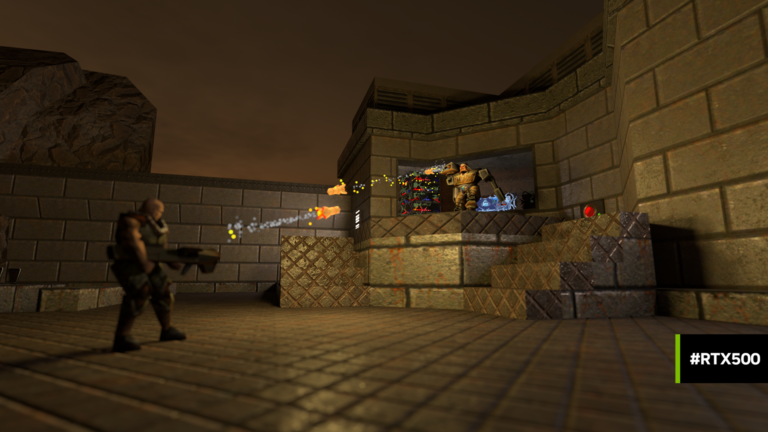
In 2019, if you wanted to check out the cutting edge in video game graphics, you needed an NVIDIA GeForce RTX 20 Series GPU and a copy of a game that was…
In 2019, if you wanted to check out the cutting edge in video game graphics, you needed an NVIDIA GeForce RTX 20 Series GPU and a copy of a game that was released in 1997, Quake II. With those pieces in hand, you could be among the first players in the world to see path tracing running in real-time on a consumer GPU. “Somehow a game from 1997 convinced me it was time to upgrade,” enthused PC Gamer critic Wes Fenlon.
As I look back at the history of NVIDIA RTX, now with over 500 RTX games and applications powered by DLSS, ray tracing, and AI-enhanced technologies, I thought it would be a good time to sit down and talk with Alexey Panteleev, an NVIDIA engineer who worked closely on the project.
Why did you choose Quake II as the subject for NVIDIA RTX’s first demonstration of path tracing?
We didn’t choose Quake II, it chose us. The project started from Q2VKPT, a tech demo created by Christoph Schied, who integrated a simple real-time path tracer into Quake II. We saw it as something new and cool and pushed the project to the finish line.
When people download and play Quake II RTX, what details would you like them to look closely at?
My personal favorite detail in Quake II RTX is the reflection and refraction system. It uses a novel algorithm for denoising combined reflections and refractions without making them blurry or ghosty.
Other than that, it’s all about the lighting. Look at how accurate all the lighting and shadowing effects are in the game world! Every lamp on every level is casting physically correct soft shadows.
Why do you think Quake II has such enduring interest from players? It just got 28 new campaign levels from MachineGames this year!
Quake II is one of the well-known classic games, and it’s no wonder that it’s got a huge fan base. After the remastered version of the original Quake was released in 2021 and warmly welcomed by the public, it made total sense for MachineGames to continue working on its sequel.
Have you seen the work that Reddit user mSteward207 has done to make the Quake II remaster compatible with the NVIDIA RTX renderer? Any thoughts or suggestions to share?
Yes, I saw those screenshots. More importantly, I received and merged some pull requests on GitHub that improved the compatibility of Quake II RTX with the maps from the remaster. I’m not ready to say what exactly is left to make all the remastered maps and models work really well with the NVIDIA RTX renderer at this time, but I guess there’s some content work to be done, such as authoring PBR materials.
Do you believe that path tracing will ultimately be the standard for lighting and rendering in games?
It’s already being used in some of this year’s biggest games, including Cyberpunk 2077: Phantom Liberty and Alan Wake II. The most recent product from Lightspeed Studios, RTX Remix, is designed to bring path-traced lighting to many retro games, too. Perhaps most games will have a realistic rendering that features path-traced lighting, and some stylized games just won’t need it. We’ll see.
How can modders of classic games get similar results?
Use RTX Remix! It’s still going through active development, but we’ve seen some impressive results from the modding community already.
Was the process of bringing path tracing to Minecraft with RTX the same, or were there different approaches to the two games?
The principles of real-time path tracing used in Quake II RTX and Minecraft with RTX are largely the same, with some interesting differences that the cubic world of Minecraft enables, such as using an irradiance cache. Minecraft is also more challenging to render because its worlds are by design dynamic and user-modifiable, so you cannot bake anything at all or make map-specific tweaks.
Next steps
To play Quake II RTX for yourself, go to Steam. For more information about NVIDIA RTX, see the NVIDIA RTX Path Tracing SDK. To get started with the ultimate modding platform, see RTX Remix and our array of tools for game developers.
Source:: NVIDIA